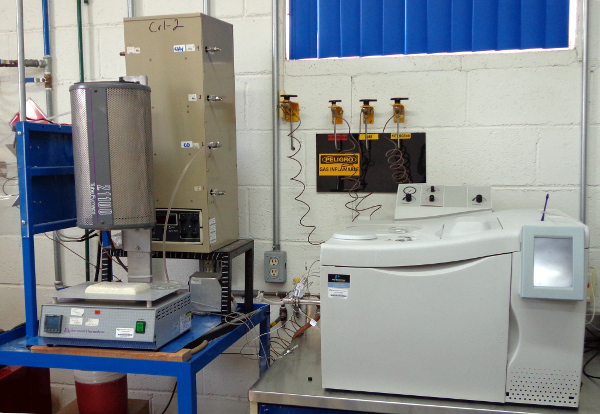Multifunctional Surfaces
Multifunctional Surfaces is a multidisciplinary area that has developed state of the art knowledge with a great potential to support the industry, health and general society’s requirements.
One example of application is photocatalysis that uses a material (photocatalyst) with the capacity to absorb light to carry out a chemical reaction. In the last decade the technological and economical relevance of photocatalysis has grown considerably thanks to the progress in the knowledge and management of surface chemistry.
Currently there is a permanent research to optimize this technology and to extend the variety of potential applications. Among these are: nanostructured coatings and materials with anti-adherent properties, dirt repellence, organic matter decomposition associated to fat (easy-cleaning surfaces) or to microorganisms (destruction of fungi, bacteria, viruses), photocatalysts that activate under solar light to produce hydrogen (H2) and fuels from carbon dioxide (CO2) as well as materials with high affinity for water (superhydrophilic materials).
Photocatalyst materials have the advantage of being used indoors and outdoors: they protect surfaces, improve air quality, lower maintenance costs, destroy bacteria, fungi and viruses, and they eliminate odors (volatile organic compounds, VOCs).

Nanoceramic Coatings

Another example of application are nanoceramic coatings with multifunctional properties obtained through humid chemistry. This line of research requires the conjunction of knowledges of several areas which will be defined depending on the surface to coat (metal, polymer, ceramic), the physical and chemical properties of the surface (texture, functional groups, thermal stability, etc.), in addition to the properties and specifications (mechanic, thermal, optical, chemical stability, appearance, permeability, among others) that the coating should possess depending on the application.
There is an exponential increase on the use of ceramic coatings. It allows for the decrease of costs in substrate materials by giving them a higher efficiency through new properties in their surfaces, for instance, anti-corrosive or anti-adherent layers. Among the potential application fields for these coatings are the automobile, aeronautic, aerospace, electronics, food, pharmacy, home appliances and other industries.
Cimav’s stories of success
The specialists in this group obtained an important technological progress with the development of a nanoceramic coating that protects the stainless steel surface of a cooking range. It prevents the yellow discoloration of steel and the normal wear, in addition to facilitating cleaning by decreasing adherence of fat and food waste on the cover’s surface. This work generated several patents and it was carried out along with one of the most important companies in home appliance industry in the world.
The same work team also implemented a catalytic air purifier in a prototype fridge. This purifier is capable of removing odors and destroying microorganisms. The results obtained under normal usage conditions indicate that the conservation of fruits and vegetables increased at least in 15 days and the concentration of odors decreased in over 75 %.
The developments in the area of Surface Chemistry are supported on the knowledge generated through research in basic and applied science; this area also acquired the ability to escalate at an industrial level. The researchers seek that Mexico be not only a user but also a developer of technology. They also offer a wide range of applications for those interested in business opportunities as well as the highest academic standards in research and in human resources formation.
- Nanostructured materials with photocatalyst properties under sun light
- Development of multifunctional (inorganic) coatings
- Biofuels (pyrolysis and biomass gasification)
- Nanostructured materials for energy storage (rechargeable batteries)

This research group has patents, publications in high impact factor journals and a vast potential to generate scientific knowledge, technological developments and innovation projects.